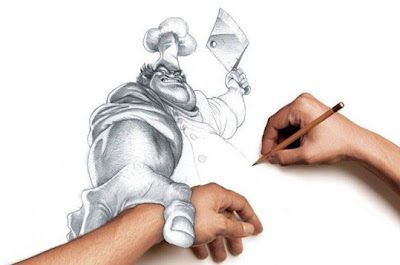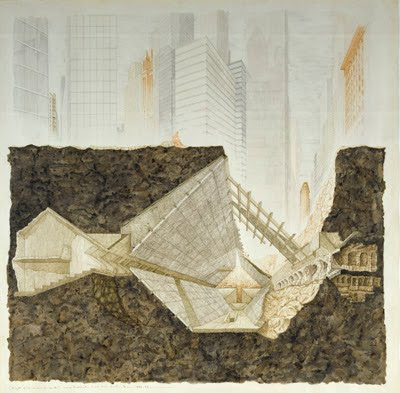Visual Arts – ART I
Instructor: Rachel Broadbent
Email: rbroadbent@wcpss.net
Website:
www.bengalarts.blogspot.comCourse Description
This course introduces the elements and principles of design through an exploration of a broad range of media. Activities emphasize skills and techniques in drawing, painting, graphics, fibers, ceramics, art history, and 3-D design. Basic drawing is emphasized.
Course Goals:
To improve the drawing skills of all students
To expose students to different materials and techniques
To provide students with a general knowledge of Art History
Classroom Expectations
· Golden Rule: Treat everyone and everything, as YOU would like to be treated. This includes not touching anyone's artwork or personal belongings.
· Pay Attention: Do not talk when I am talking. You WILL miss something.
· Be Prepared: Always have your sketchbook, eraser, and pencils in class. You must be in the classroom by the tardy bell or you are late.
· Clean Up: YOU are responsible for cleaning your work area and helping maintain the shared areas. Repeated failure to clean your area will result in 30 minute detention with me doing art room maintenance. You will serve within 2 days.
· 100% Effort: Always work hard and do your best. I expect you to work the entire period on your artwork. I will let the class know when it is time to clean up. No sleeping or sitting and distracting your neighbors.
Materials for class: (see me after class if you have a problem getting these)
Sketchbook – minimum size 8.5 X 11
Pencils – 2 wooden #2
· Eraser
Permanent Markers (Black)
Color Pencils
Handheld Pencil Sharpener
Class Procedures:
Before the bell - Come into class and get out any required materials. Work on the “bell ringer”.
After the bell rings – Immediately get quiet and in your seat for Start with Art, discussion of the daily objective, and other announcements.
Studio time - This is time for you to independently work on your projects. You may talk quietly with your table, however, I expect that conversations will be limited to appropriate topics and you will all be working on your assignment. You may get out of your seat to get materials, but should not wander around the room for any other reason.
Clean up time – I will let you know when it is time to clean up. I will give you 5-10 minutes to do so, depending on what materials we have out. Do not clean up before this time. Everyone is responsible for cleaning up their own work area and leaving it cleaner than they found it. All supplies should be returned to their appropriate place and common areas are to be cleaned as well for the next class.
Graded Work:
65% - Projects
15% - Sketch Book
20% -Classwork
Final Grade:
40% - 1st Quarter
40% - 2nd Quarter
20% -Final (teacher made)
Assignment Policy:
All assignments will be completed, without exception. If a student does not have their assignment complete on time, they will be assigned to the FVHS Working Lunch program until the assignment is complete.
Late Policy:
For every day an assignment is late, 5 points will be deducted. (If an assignment is 4 days late, -20 points) Any assignment submitted after 5 days will have a maximum point value of 60.
Common sense guidelines for maintaining safety and cleanliness in the Art room:
Do not run or fool around in the classroom with scissors, compasses or other tools.
Do not throw anything at anytime.
Wipe up any liquid spills immediately, before we have a bigger mess or someone gets hurt!
If unsure about how to use a tool or a technique – ask!
Use newspaper to cover tables when working with messy supplies like pastels and paint.
Do not use the art room as a lunchroom- no food or drink, except bottled water.
Never apply art media to your skin unless it is designed for that purpose. I do not have any of these!!!
· Follow proper disposal methods for art products as directed by Mrs. Broadbent. Do not dispose materials down the drain unless so indicated (especially clay, slip, plaster, turpentine, etc.).
Donations Welcome!
Magazines (for collages)
Old hairdryers for drying paint
Wire coat hangers
Sand Paper
Plastic Cups
Trash Bags
Zip Lock Bags
Glue
Toothpicks
Jars
Q-tips
Plastic Wrap
Plastic plates
Spray Paint
· Any other materials that can be used in an art room
Curriculum:
-Drawing
-+/- space
-Perspective
-Still Life
-Value
-Self Portrait
-Color Theory
-Shape
-3-D
-Art History
*** Sequence and time spent in each area is subject to change do to student progress and availability of materials.
It is my goal to make the Art Room a comfortable and friendly working environment for EVERYONE. I want my students to enjoy their experience in here. I appreciate everyone’s cooperation in helping to achieve this goal. Thank you!






































